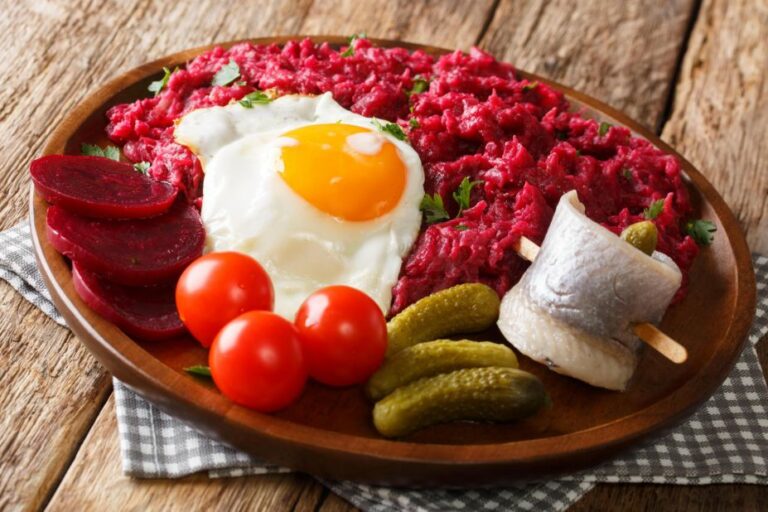Introduction: Seasonal Ingredients in German Cooking
German cuisine is known for its hearty and flavorful dishes, but did you know that many of these dishes use seasonal ingredients? German cooking is heavily influenced by the changing seasons, with different ingredients and dishes being popular during different times of the year. From fresh produce in the spring to comforting stews in the winter, German cuisine embraces the seasons and the flavors they bring.
Spring: Fresh Produce and Herbs
In the spring, German cooking shifts towards using fresh produce and herbs. Asparagus, also known as “Spargel,” is a highly prized ingredient during this time of year. It is often served simply with hollandaise sauce or in a creamy soup. Rhubarb is another popular spring ingredient, used in sweet desserts such as rhubarb tart or in savory dishes like rhubarb chutney. Fresh herbs like chives, parsley, and dill are also used extensively, adding a burst of freshness to dishes like potato salad and scrambled eggs.
Summer: Light and Refreshing Dishes
During the summer months, German cooking focuses on light and refreshing dishes. Salads made with fresh greens and vegetables are a popular choice, as are cold soups like “Gazpacho” made with tomatoes, peppers, and cucumbers. Grilled meats like sausages and pork chops are also common, served with sides like potato salad and grilled vegetables. For dessert, Germans enjoy “Erdbeerkuchen,” a strawberry cake that showcases the delicious fruit at its peak.
Autumn: Hearty Fare with Root Vegetables
As the weather cools down, German cuisine shifts towards heartier fare. Root vegetables like carrots, parsnips, and turnips are used extensively in stews and soups, adding a depth of flavor and texture. Cabbage, both red and white, is also a popular ingredient during this time of year. Dishes like “Sauerkraut” and “Rotkohl” showcase the versatility of this humble vegetable. And of course, Oktoberfest brings its own seasonal specialties, like “Brezen” (pretzels) and “Haxen” (pork knuckles).
Winter: Comforting Stews and Spices
In the depths of winter, Germans turn to comforting stews and spices to warm them up. Hearty dishes like “Gulasch” (beef stew) and “Kartoffelsuppe” (potato soup) are popular choices, as are roasted meats like duck and goose. Spices like cinnamon, nutmeg, and cloves feature heavily in desserts like “Lebkuchen” (gingerbread) and “Stollen” (fruitcake). And for a festive treat, Germans enjoy “Glühwein” – a warm mulled wine spiced with cloves, cinnamon, and orange peel.
Conclusion: Embracing the Seasons in German Cuisine
German cuisine may be known for its hearty dishes and strong flavors, but it also takes inspiration from the changing seasons. From fresh produce in the spring to comforting stews in the winter, German cooking embraces the flavors and ingredients of each season. By using seasonal ingredients, German chefs are able to showcase the best of what each season has to offer and create dishes that are both delicious and comforting.

